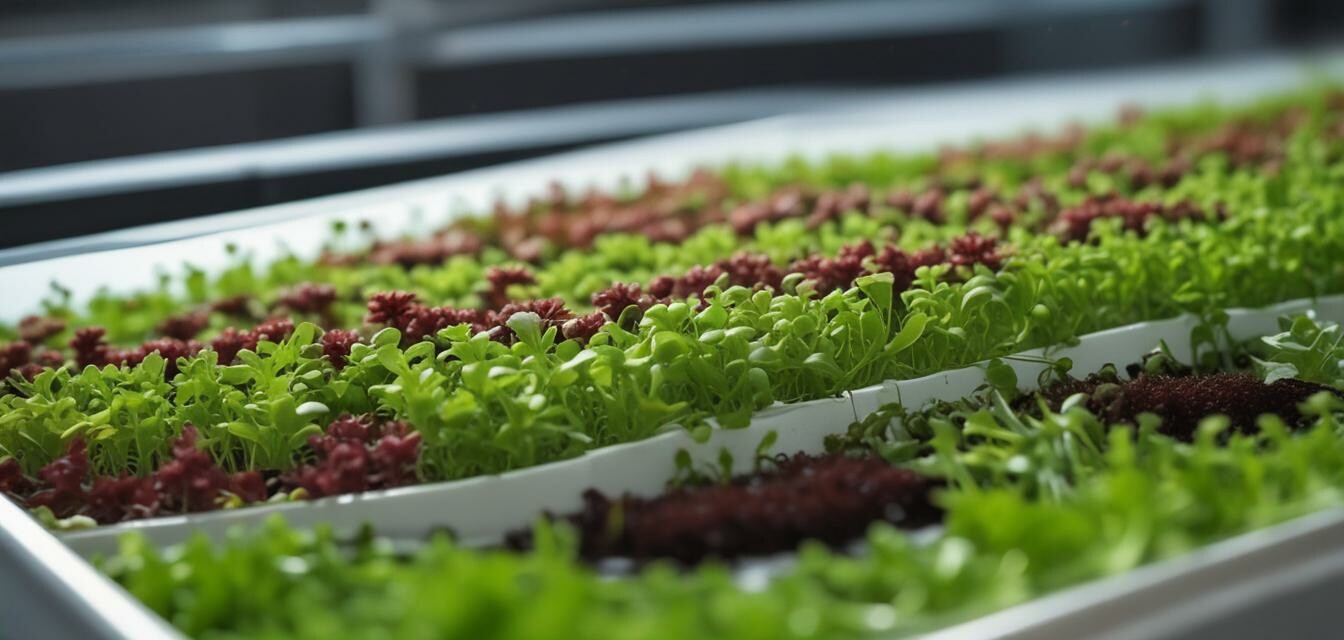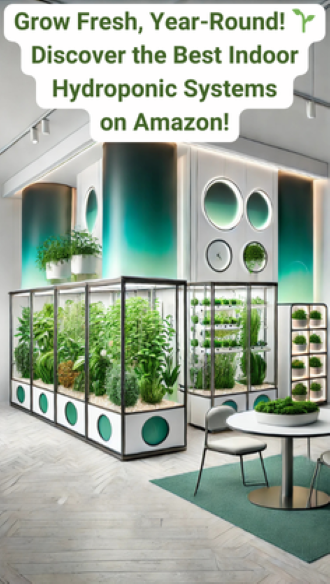
Growing Microgreens: A Beginner’s Guide
- Microgreens are easy to grow in hydroponic systems.
- They require minimal space and can be grown indoors.
- These nutrient-dense plants add flavor and nutrients to meals.
- Understanding light, water, and nutrient needs is essential.
- Harvesting microgreens can be done within two weeks of planting.
Microgreens, the young seedlings of edible vegetables and herbs, have gained popularity due to their rich flavors and impressive nutrient profiles. They can be easily grown indoors using hydroponic systems, making them an excellent choice for urban gardeners and those looking to enjoy fresh produce year-round. In this guide, we will explore how to get started with growing microgreens in hydroponics, including tips, techniques, and common challenges.
What are microgreens?
Microgreens are small, edible plants harvested just after the first true leaves have developed. They can be grown from a variety of plants, including vegetables, herbs, and legumes. Known for their vibrant colors and intense flavors, microgreens pack a punch when added to salads, sandwiches, or as garnishes.
Why grow microgreens in hydroponics?
- No soil required: Hydroponics eliminates the need for soil, reducing mess and making indoor growing more feasible.
- Quick growth: Microgreens typically grow rapidly, with many ready to harvest in just 7 to 14 days.
- Space-efficient: Hydroponic systems can fit into small spaces, making them perfect for apartment dwellers.
- Healthy eating: These greens are packed with vitamins and minerals, offering a healthy addition to any diet.
Getting started with hydroponic microgreens
Before diving into the specifics, let’s cover the basic steps to create a successful hydroponic microgreen setup.
Essential supplies
| Item | Purpose |
|---|---|
| Growing tray | Containers to hold the media and plants. |
| Growing medium | Material like coconut coir or rock wool that supports plant roots. |
| Seeds | Quality seeds specific to the microgreens you wish to grow. |
| Watering can or spray bottle | Method to easily apply water to the growing medium. |
| Nutrients | Specialized hydroponic nutrients for plant growth. |
| Light source | Grow lights or natural sunlight to promote healthy growth. |
Steps to grow microgreens
- Prepare your growing tray: Fill it with your chosen growing medium, ensuring a level surface.
- Sow the seeds: Evenly distribute seeds across the surface, ensuring good coverage.
- Moisten the medium: Use a spray bottle or watering can to gently water the seeds.
- Provide adequate light: Place the tray under grow lights or in a sunny spot for at least 12-16 hours a day.
- Monitor moisture levels: Ensure the medium remains damp but not soggy, adjusting watering as necessary.
- Time for harvest: After 1-2 weeks, microgreens will be ready to cut just above the soil line.
Nutrient needs for microgreens
Microgreens require effective nutrient management for optimal growth. Here’s what you need to know:
| Nutrient | Function | Source |
|---|---|---|
| Nitrogen | Promotes leaf growth and vigor. | Hydroponic nutrient solutions. |
| Phosphorus | Supports root development and flowering. | Hydroponic nutrient solutions. |
| Potassium | Contributes to overall plant health and disease resistance. | Hydroponic nutrient solutions. |
| Micronutrients | Essential for various physiological functions in plants. | Hydroponic nutrient solutions. |
Common microgreen varieties
Here are some popular microgreen varieties to consider:
- Radish: Quick to germinate and adds a spicy kick.
- Basil: Aromatic herb, great for culinary use.
- Mustard: Offers a zesty flavor, that is both tasty and nutritious.
- Sunflower: Nutty flavor and cool texture, a favorite among growers.
- Pea shoots: Sweet and crunchy, perfect for salads and sandwiches.
Tips for successful microgreen growing
Beginner tips
- Start with easy-to-grow seeds such as radish or sunflower for your first batch.
- Keep your growing area clean to minimize pests and diseases.
- Experiment with different lighting options to find what works best for your setup.
- Adjust your nutrient solution according to the growth stage of the microgreens.
- Regularly check moisture levels to prevent drying or root rot.
Conclusion
Growing microgreens in hydroponic systems is an enjoyable and rewarding venture that can fit into any lifestyle, no matter how busy you are. By understanding the growing process, maintaining proper care, and experimenting with different varieties, you can enjoy fresh and nutritious microgreens with little effort. If you want to delve deeper into hydroponic systems, check out our complete guide on vertical hydroponic systems or explore lighting solutions for hydroponics for a more optimized growing environment.
Pros
- Fast growth and quick harvest.
- Nutrient-rich additions to your diet.
- Requires minimal space.
- Can be grown indoors year-round.
Cons
- Requires careful monitoring of moisture and light.
- Potential for mold growth if not managed properly.
- Initial setup cost for hydroponic systems.
With the right approach and some patience, you'll quickly discover the joys of growing your own microgreens. Happy growing!
